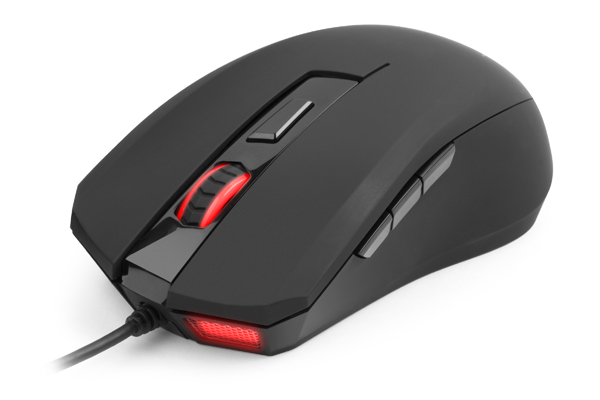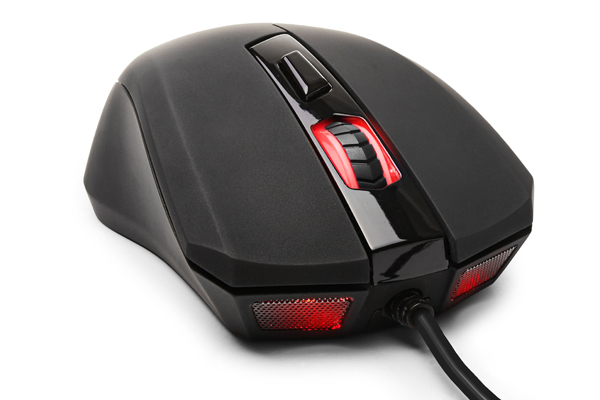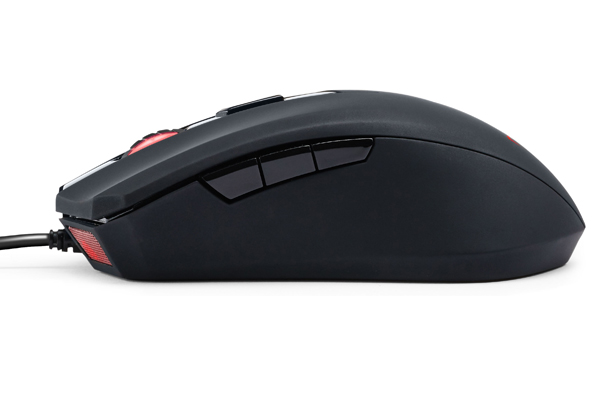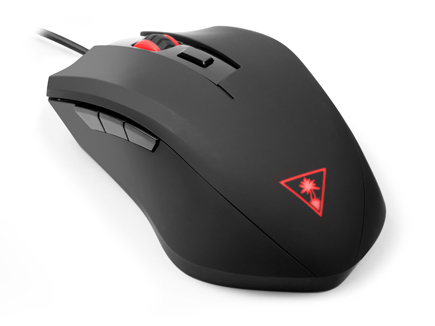Tom's Guide Verdict
A few years ago, the Grip 500 gaming mouse would have felt state of the art, but so-so software and design make it feel outdated.
Pros
- +
Decent button layout
- +
good in-game performance.
Cons
- -
Limited software
- -
inconsistent lighting
- -
nothing unique or innovative.
Why you can trust Tom's Guide
My first thought when I finished testing the Turtle Beach Grip 500 ($70) was "good enough." The Grip 500 is a capable gaming mouse all around, featuring a decent design, good performance and decent software. However, it's creaky around the edges and quite expensive for what it does. A few years ago, the Grip 500 would have felt state of the art, but now, lackluster software and a samey design make for a product that doesn't stand out.

Design
If you've been following Turtle Beach's new line of peripherals, you'll know that the Turtle Beach Grip 300 mouse is quite small. (The company, best known for gaming headsets, has now started producing gaming mice and keyboards.) The Grip 500 goes the opposite direction: This mouse is huge, and suitable for both palm and claw grips. The matte surface feels comfortable, but lacks coarse textures, making it a little slippery if your palm sweats.
MORE: Best Gaming Mice
In terms of buttons, the Grip 500 does pretty well. The device has seven buttons: a left button, a right button, a clickable scroll wheel, a dots-per-inch (DPI) sensitivity adjuster beneath that and three thumb buttons. (You can also assign the scroll wheel different functions when it scrolls up and down.) The thumb buttons aren't terribly distinct, but they get the job done and don't feel cramped.

Generally speaking, the buttons and layout of the Grip 500 feel fine, but there's nothing that stands out about them. Almost every other dedicated gaming mouse on the market looks like the Grip 500, but competitors often offer thumb rests, varied textures or tunable weights to make the product feel a little fresher.
Features
Unlike the simpler Grip 300, the Grip 500 runs on a software suite called, uncreatively enough, Turtle Beach Grip 500. "Uncreative" might be a good word for the software in general. While you can reassign mouse buttons, create different profiles and control the backlighting (to some extent), these processes feel clunky and lack key features that tend to come standard on modern gaming mice.

Assigning buttons works well, but consider profiles, which can be a real boon if you have a lot of games with different play styles installed on your computer. You can adjust the DPI settings (which range from 200 to 8,200), the polling rate (how rapidly the mouse communicates with the computer) and the lighting for each one. The Grip 500 allows only five different profiles; you can't even save and load them as the need arises.
On the bright side, this means that the profiles are all stored on the mouse, and don't require installing software if you plug the mouse into another computer. The downside, of course, is that if you have more than five games with different button requirements, you'll have to readjust every time you load a new one up.
Even worse, you can't automatically link profiles with games, so you'll have to manually choose one before you play. This would have been standard in a gaming mouse perhaps three years ago, but application-linking is now a standard feature in Logitech, Razer, SteelSeries and Roccat mice; its absence here is palpable.

Likewise, the illumination options are lackluster. The Turtle Beach logo lights up, as do the scroll wheel and two bumpers on the front of the mouse. You can choose from a wide variety of colors for the scroll wheel, and they all display well.
The logo and the bumpers, however, are permanently set to red. It's not clear why the scroll wheel is the only part of the mouse to feature multicolored lighting, but it's another example of the Grip 500 offering something functional, yet not up to industry standards. Similar mice from 2014 and 2015 tend to offer just one color, or a rainbow for every lighted point; the half-and-half approach feels confusing.
Performance
One thing the Grip 500 has going for it is the way it handles during a game. I ran it through Quake Live, StarCraft II: Heart of the Swarm, Torchlight II and Star Wars: The Old Republic, in order to run the full gamut of first-person shooters, real-time strategy games, role-playing games and massively multiplayer online games. Each game worked extremely well.
MORE: Best Gaming Keyboards
I found the mouse worked best for Quake Live and The Old Republic. In the former, the extra buttons weren't terribly useful, but the mouse's overall design helped me keep my hand in the right place. For the latter, having three extra buttons was perfect for a casual MMO player who wants to map a few buttons without overdoing it.

Otherwise, the Grip 500 seemed more or less equally suited to any kind of PC game out there. As all-purpose mice go, it's good, but comparable mice offer roughly the same level of performance.
Bottom Line
Given the Turtle Beach name and how much time the company had before it put its first high-end mouse on the market, I'm surprised that the Grip 500 feels so uninspired. It's not a bad peripheral, by any stretch. It does, however, cost just as much money as the Logitech Daedalus Apex or the Razer DeathAdder Chroma, and both of those mice offer much more impressive software and lighting options.
In fact, that's the primary problem with the Grip 500. As it lacks linked profiles, nuanced backlighting, sleek software and textured surfaces, it simply doesn't offer as much as its competitors do for a similar price. The mouse offers everything that gamers expected from mice circa 2013; today, it feels thin, but Turtle Beach insists on charging the same amount of money as the device's more robust counterparts.
As it stands now, the Grip 500 feels like a forgettable gaming mouse in a sea of forgettable gaming mice: not bad enough to offend, but not good enough to stand out. Wait for a price drop, a substantive firmware update or a follow-up model before you consider buying it.
Marshall Honorof is a senior writer for Tom's Guide. Contact him at mhonorof@tomsguide.com. Follow him @marshallhonorof. Follow us @tomsguide, on Facebook and on Google+.
Marshall Honorof is a senior editor for Tom's Guide, overseeing the site's coverage of gaming hardware and software. He comes from a science writing background, having studied paleomammalogy, biological anthropology, and the history of science and technology. After hours, you can find him practicing taekwondo or doing deep dives on classic sci-fi.


